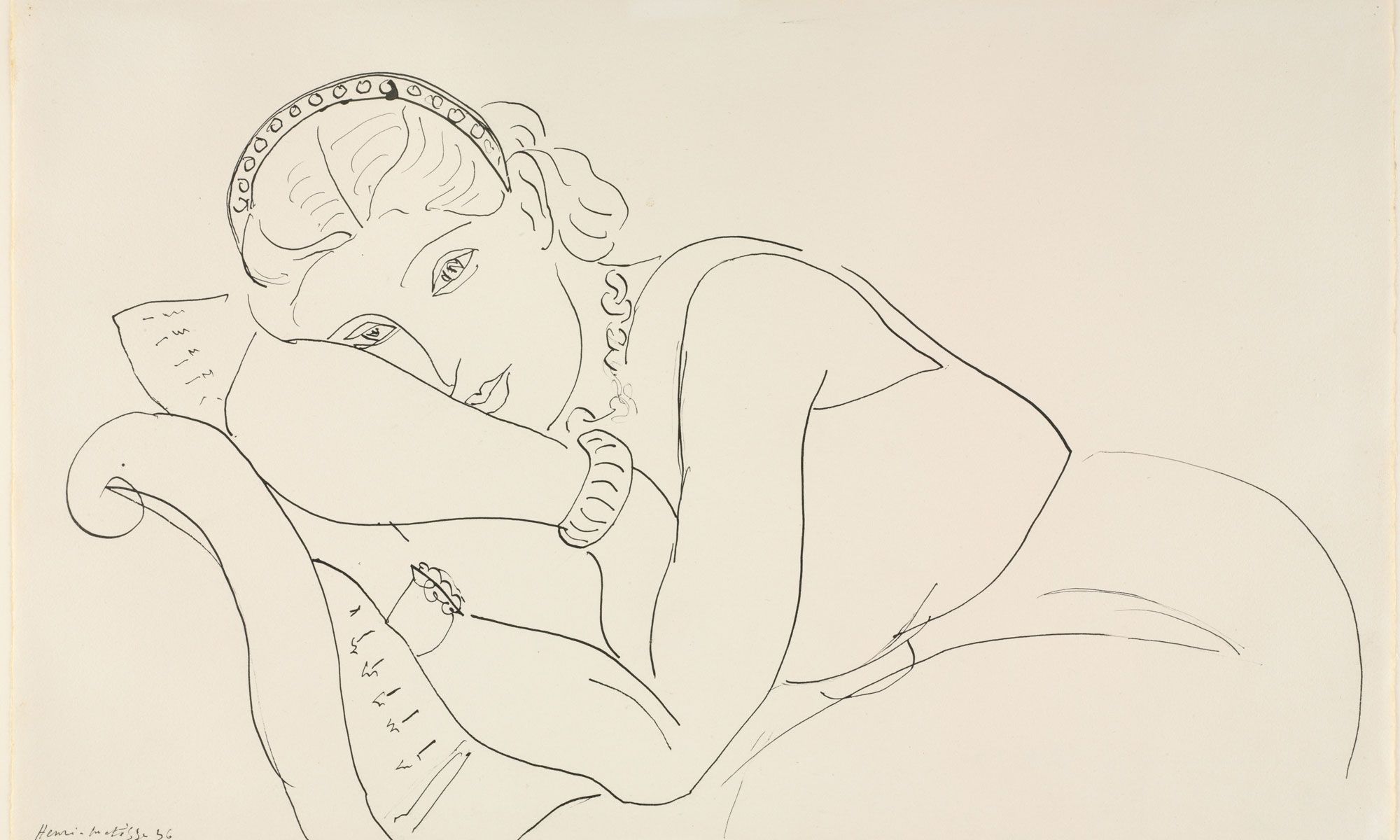Henri Matisse, Resting Woman Wearing Tiara (1936) is part of the inaugural show of works on paper at the Baltimore Museum of Art's new Ruth R. Marder Center for Matisse Studies Photo: Mitro Hood; courtesy of the Baltimore Museum of Art; © 2021 Succession H. Matisse/Artists Rights Society (ARS), New York
Of all the treasures in the encyclopaedic Baltimore Museum of Art, its crown jewel is the Matisse collection—numbering more than 1,200 works and broadly recognised as the largest and most comprehensive holdings of the French artist’s work at any public institution worldwide.
Aiming to increase exhibition and publication opportunities through direct encounters with these objects, the museum inaugurates the Ruth R. Marder Center for Matisse Studies on 12 December. The 2,500 sq. ft space on the first floor includes a dedicated gallery for works on paper, a study room and workspaces open by appointment to scholars and students, and the first permanent museum commission by the 75-year-old US painter Stanley Whitney, who has long been inspired by Matisse.
The 2,500 sq. ft Matisse study centre includes a study room and workspaces open by appointment to scholars and students
“The idea is to be a brain trust, the throbbing heart of Matisse,” says the museum’s director Christopher Bedford of the $5m centre designed by Quinn Evans Architects. An additional endowment fund of $3.5m supports its director, Katy Rothkopf, who is also a senior curator of European painting and sculpture at the museum.
“We’ve never had a dedicated space to show Matisse—Matisse alone, Matisse with his friends, Matisse as an influence on artists working today,” says Rothkopf, who organised the current exhibition A Modern Influence: Henri Matisse, Etta Cone and Baltimore (until 2 January), delving into the 43-year friendship between the artist and this Baltimore collector who, with her older sister Claribel, bequeathed more than 600 Matisse works to the museum in 1949.
Rothkopf hopes the centre will attract colleagues from other museums to do research as well as generate new projects at Baltimore, whether large, like A Modern Influence, or highly focused, such as Matisse: The Sinuous Line (12 December-24 April), the inaugural show she has organised for the works on paper gallery. Departing from Matisse’s 1909 bronze sculpture The Serpentine, it traces how the streamlined curve defining that figure is deployed economically across 14 other bronzes, drawings, etchings and lithographs spanning four decades. Rothkopf will install a second rotation of light-sensitive works on paper around this theme after five months.
Henri Matisse's bronze sculpture The Serpentine (original model 1909; this cast around 1930) Photo: Mitro Hood; courtesy of the Baltimore Museum of Art; © 2021 Succession H. Matisse/Artists Rights Society (ARS), New York
Starting next summer, the curator Denise Murrell—who was acclaimed for her groundbreaking 2018 exhibition Posing Modernity: The Black Model from Manet and Matisse to Today based on her thesis at Columbia University—will undertake the centre’s first research fellowship for two years, alongside her current associate curator post at the Metropolitan Museum of Art in New York. “Given her track record as a scholar,” Bedford says, “we hope she will delve into Matisse’s relationship to travel, in particular non-Western influences.”
For three large-scale windows in the corridor between the centre’s gallery and the contemporary wing, Whitney has translated his vibrant freehand grid paintings into the medium of stained glass for the first time. Titled Dance With Me Henri, the installation of hand-blown glass panes, composed in grids with organic contours, activates the space with a glorious play of coloured light and reflects the influence of Whitney’s early pilgrimage to the Matisse chapel in the south of France.
Long inspired by Matisse, the US painter Stanley Whitney was commissioned to create a trio of stained-glass windows, titled Dance With Me Henri, for the new study centre Photo: Mitro Hood
Whitney’s watercolour and gouache sketches experimenting with colour combinations for the commission will go on show next November in the centre’s third exhibition, organised by the museum’s senior curator for research and programming, Katy Siegel, who oversaw the fabrication of the windows with the German stained glass specialists Mayer of Munich.
“It's important for the Matisse centre to be establishing that dialogue between modern and contemporary art,” says Siegel, “especially with underrepresented artists, Black artists, women artists, whose role in modernism hasn’t been fully recognised.”

